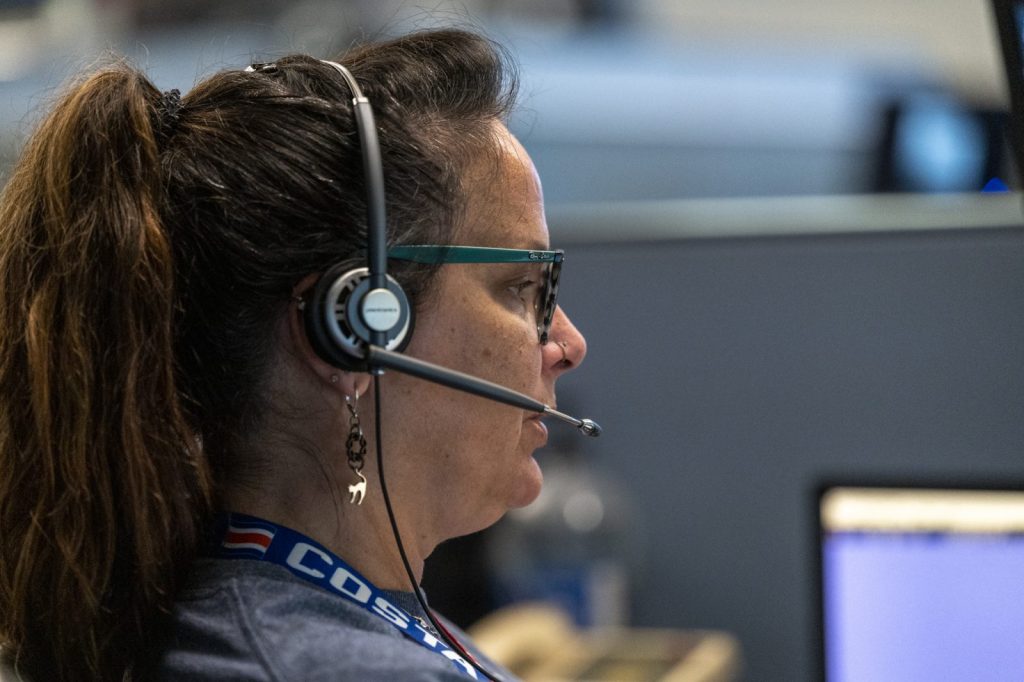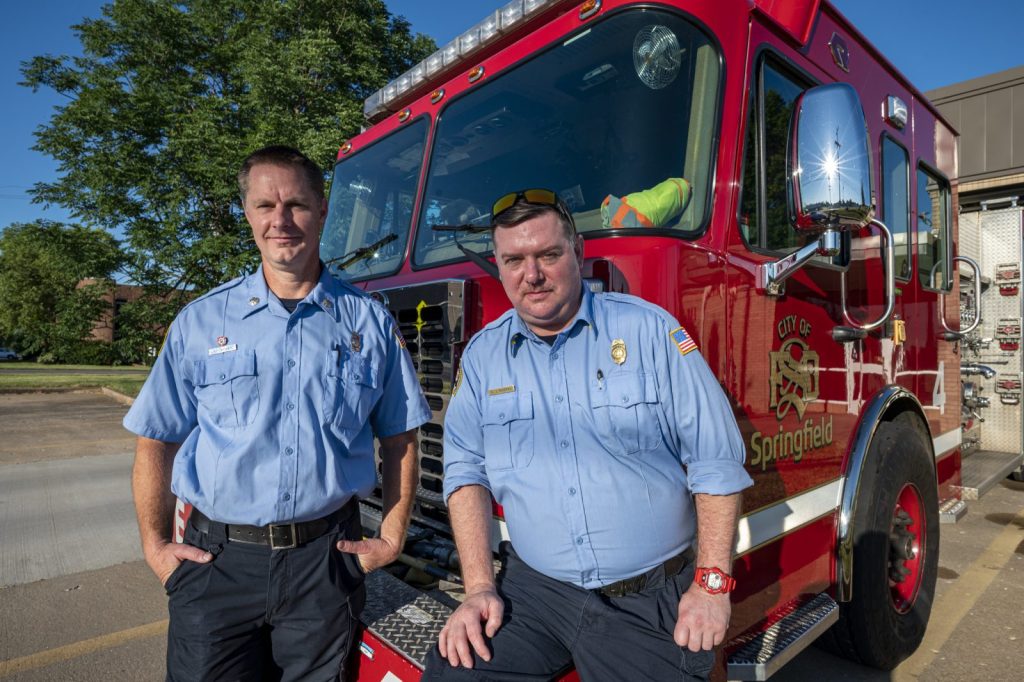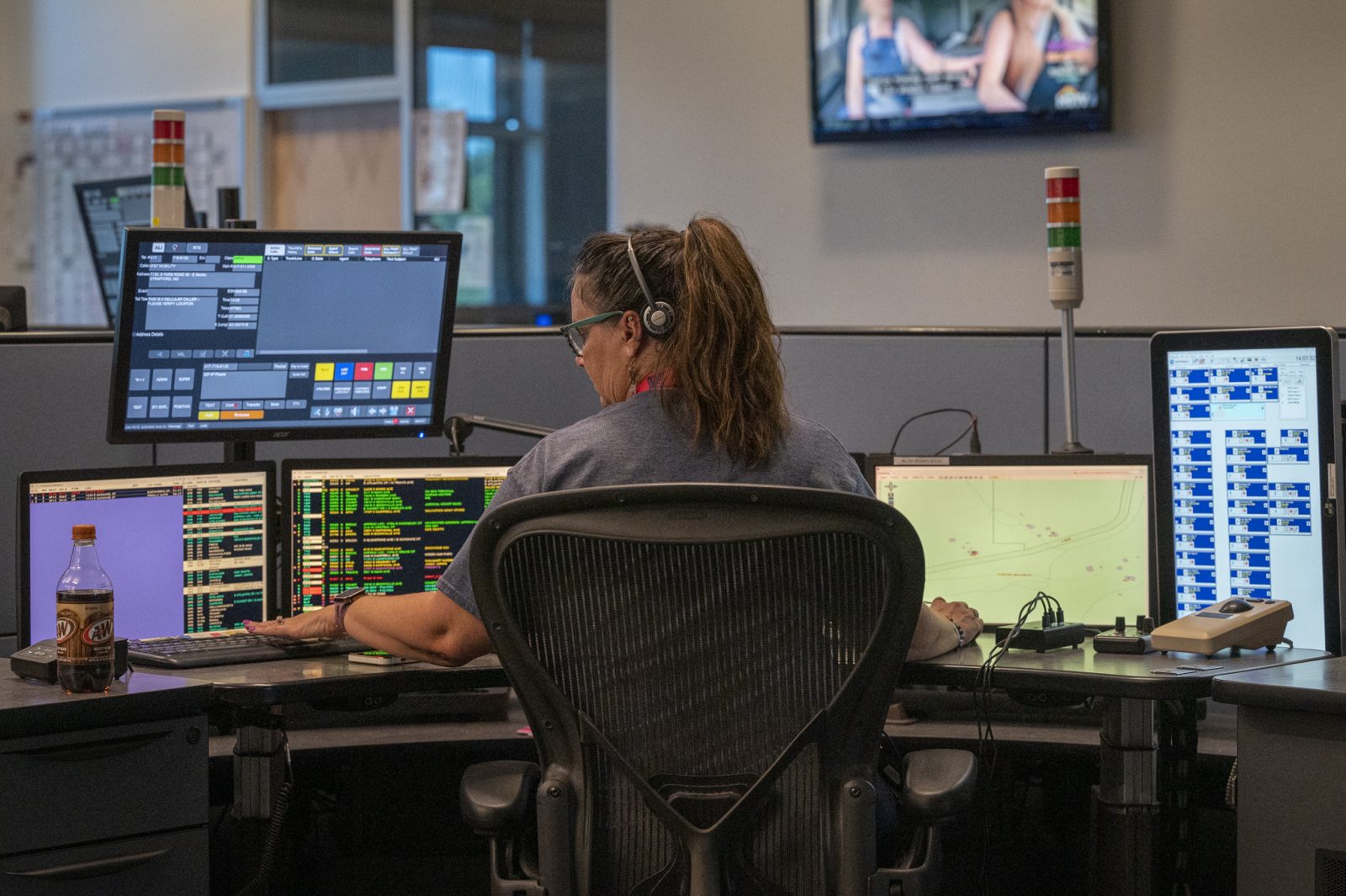This story is part of a Daily Citizen series on Springfield's opioid crisis.
When emergency responders in Springfield get a 911 call about an opioid overdose, a series of events sets off like dominoes. Wailing sirens. Careful instructions to panicked friends or family. And sometimes mass confusion.
The details can be sketchy, and the 911 caller may say just enough, then hang up and bolt out of fear of getting in trouble, says dispatcher Marlene Maupin. She’ll try a callback. If that doesn’t work, dispatch can find the caller’s cell phone location by GPS coordinates and translate that into an approximate — or sometimes exact — address. Bingo.
All the while, she’s alerting medical, fire and police dispatchers. Sometimes they have to use cell phone towers to zero in better.
It only works so well, says 911 dispatcher Lisa Feltz. “If they’re in an apartment building, we have no idea. We know they’re in a building somewhere or in a hotel. It works really well in a house, but in an apartment, not so much.”
That’s when first responders go on a search — if a witness hasn’t flagged them down.
Anxiety and empathy can drain first responders
Staying calm is part of their routine, but dispatchers understand the panic in all those voices. Maupin feels it personally. She was married to someone who had trouble with addiction; her children’s longtime friends have died from overdoses.

“I always feel bad (for the caller) because that’s somebody’s son, somebody’s father, someone who loves that person unconditionally,” Maupin said.
Everyone used to worry about kneeling on a needle and getting stuck trying to save someone from an overdose. Lately, the idea of fentanyl exposure is top of mind.
Medical experts debate whether handling or breathing particles pose a true risk, but many first responders don’t take chances. They suit up in masks, face shields and the thicker, protective “fentanyl gloves.”
More than contaminated needles or fentanyl, first responders say their greatest threat is just getting to the scene. Picture: A police car, a 30-ton fire engine and an ambulance weaving through Springfield traffic. Every unit has standards about exceeding posted speeds, approaching stop signs and red lights, “But still there is always a potential danger for having to drive like that,” says Springfield Police Officer Justin Garrett.
Story continues below:
OPIOID CRISIS SERIES
Blue lips and frenzied 911 calls: Springfield's growing opioid obsession plagues city
First responders have formed gruesome — and draining — reviving rituals as cases of fentanyl and other opioid overdose deaths climb
The financial cost of response

Each run has a financial cost, not to mention responder salaries. A fire engine easily guzzles 2.3 mpg of $5.30 diesel.
The Springfield Fire Department has a heat map showing clusters of EMS and opioid-related incidents. A red-hot smudge covers the busy neighborhoods around West College Street. Fire crews are so busy responding to all kinds of 911 calls there, the city plans to open its 13th fire station on College Street in November. The $3.5 million project is paid for by part of a level property tax voters approved in 2017.
There’s wear and tear on a $300,000 top-line, fully loaded ambulance. And for the survivors, the medical costs can add up. On average in Greene County, say CoxHealth officials, fees for emergency medical services before insurance run about $2,000. A dose of Narcan billed to the patient can run about $185.
Do they all pay? “I’m going to go out on a limb here and say ‘Not many’,” says Mark Alexander, who oversees the ambulance service as director of Emergency Medical Services for CoxHealth. “The costs to the system are borne by all the patients we take care of so everyone, each type of patient, has to contribute.”
Health care suffers
“More important than the financial impact,” says Mercy Hospital’s EMS Director Bob Patterson, “is the increase in the number of calls and activity that it takes crews out of service while answering those cases. If a house fire, cardiac arrest or injury accident occurs at the same time, crews working an overdose have to rely on a backup team to respond. That means a longer response time, says Engine 1 Lt. Mark DeLozier.
Springfield Fire Department Chief David Pennington: “Our record right now is four patients in the same car overdosed. … So now we’re sending two, possibly three fire engines to one incident to appropriately treat these patients.”
Says CoxHealth EMS Medical Director Dr. Matthew Brandt: “Look at the number of people dying from accidents, cancer, heart attacks, and the number dying from opioids. Decide where does this fit on your list of priorities, and how should we devote the distribution of dollars?”
Drug abuse and poverty and child abuse and domestic abuse — they’re all interrelated, says Springfield Police Chief Paul Williams. “If I had a magic wand, I would eliminate illegal narcotic use. And you would be amazed our how quality of life in the community would improve.”


